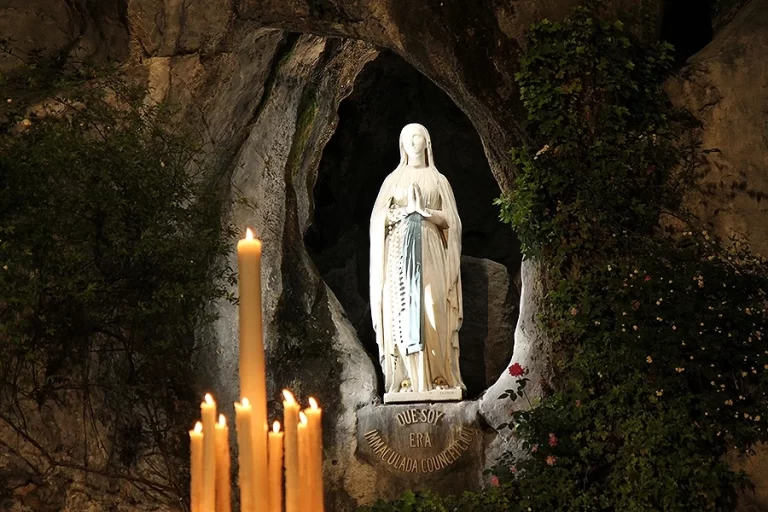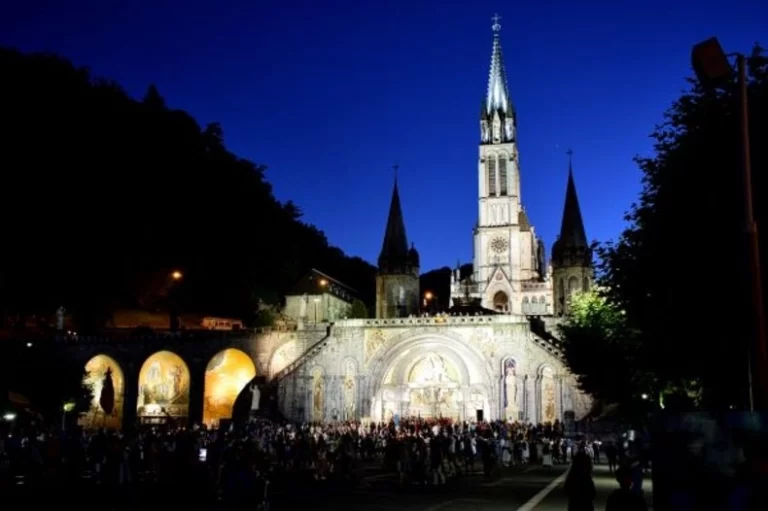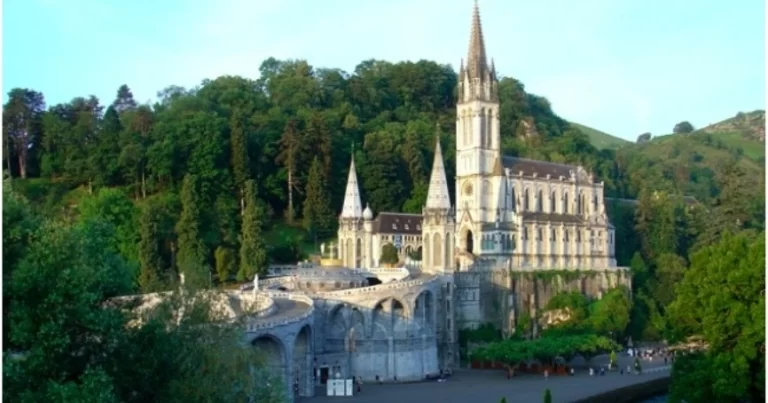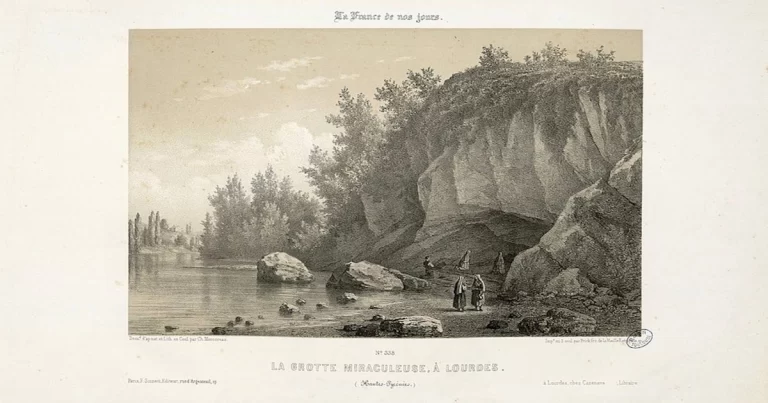How Eucharistic Miracles Provide Evidence of Real Presence of Jesus in the Eucharist?
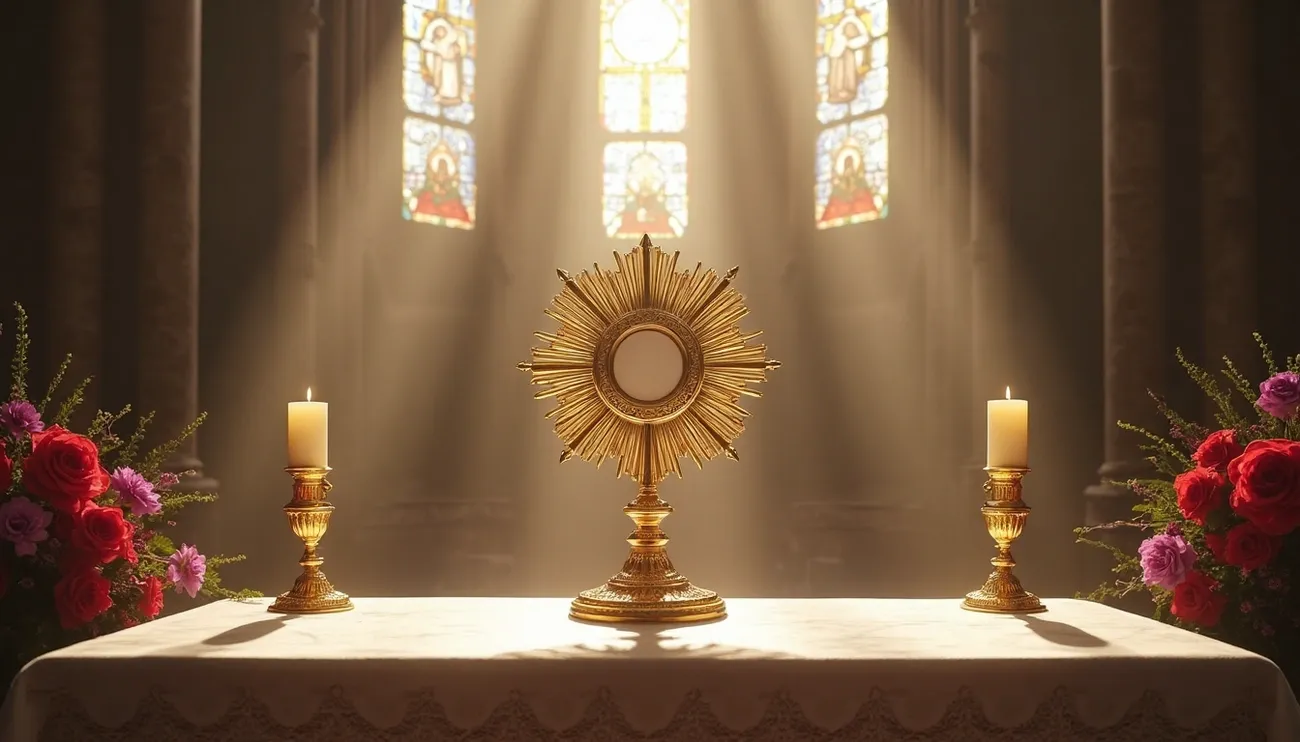
Throughout the centuries, Eucharistic miracles have provided tangible evidence of what we as Catholics hold as sacred truth: the Real Presence of Our Lord Jesus Christ in the Most Holy Eucharist. The Catholic Church has recognized over one hundred such miraculous events, many occurring during periods when faith in transubstantiation was beginning to weaken among the faithful.
These extraordinary manifestations span across continents and throughout history, from the 8th century to our current era. The famous Eucharistic miracle of Lanciano, Italy stands as perhaps the most renowned, where bread and wine physically transformed into human flesh and blood. This miracle remains preserved to this day – the blood coagulated into five distinct globules, representing the five wounds of Our Lord Jesus Christ.
What makes these Catholic Eucharistic miracles particularly compelling is their scientific validation. I find it remarkable how modern science has confirmed what we have always believed through faith. In recent cases like Legnica, Poland (2013) and Tixtla, Mexico (2006), hosts developed red stains later confirmed through rigorous laboratory testing to be human heart tissue and blood of the AB group. The Eucharistic miracle in Sokolka, Poland (2008) revealed myocardial tissue identical to that of a person nearing death.
Let us consider fifteen Eucharistic miracles approved by the Catholic Church that provide profound evidence of the Real Presence of Jesus in the Eucharist. From the miracle that established the feast of Corpus Christi to recent manifestations that have been photographed and scientifically analyzed, these events continue to strengthen our faith and challenge purely scientific explanation.
To understand these miracles is to draw upon both historical accounts and scientific evidence, providing a complete picture of how God continues to manifest His presence in the Blessed Sacrament.
Eucharistic Miracle 1: Lanciano, Italy (8th Century)
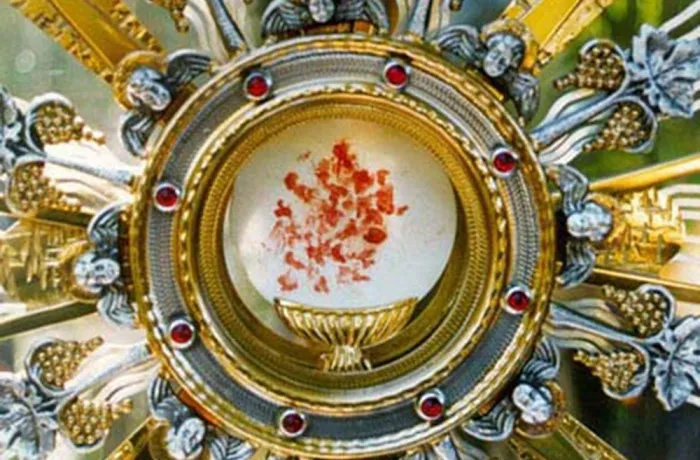
The ancient town of Lanciano hosts what many consider the first and greatest Eucharistic miracle in Catholic history, dating to the 8th century. I find it remarkable that despite occurring in an era when detailed documentation was uncommon, this extraordinary manifestation of Our Lord’s Real Presence has endured through centuries, strengthening the faith of countless souls.
What happened in Lanciano?
Between 730-750 AD, a Basilian monk sought refuge in Italy amid the persecution of religious images by Byzantine Emperor Leo III. This tumultuous period witnessed many Greek monks fleeing to Italy to escape violence, as sacred mosaics were destroyed and some monks were martyred for their religious practices. The Almighty, in His infinite wisdom, assigned this monk to celebrate Mass at the monastery of St. Longinus, named after the Roman centurion who pierced Christ’s side with a lance.
According to tradition, while celebrating the Holy Sacrifice of the Mass, the monk experienced profound doubts about transubstantiation—the Catholic doctrine that bread and wine truly become Christ’s body and blood. As he pronounced the words of consecration, an astonishing transformation occurred before his eyes: the host changed into living flesh and the wine into visible blood.
The blood soon divided into five pellets of unequal size and irregular shape, reminiscent of Christ’s five sacred wounds. Furthermore, during a 1574 inspection, a mysterious phenomenon was observed—each individual blood clot weighed the same as all five together, though this phenomenon did not recur in subsequent examinations.
How Science validated the Miracle at Lanciano?
In 1970-71, Professor Odoardo Linoli, head of the laboratory of clinical analysis at Arezzo hospital, conducted the most rigorous scientific investigation of the relics. His findings, later corroborated by Professor Ruggero Bertelli of the University of Siena, revealed remarkable conclusions:
- The flesh consists of myocardium (heart wall) tissue
- Both the flesh and blood belong to the human species with blood type AB
- No preservatives were found, despite exposure to atmospheric agents for centuries
- The blood proteins were normally fractioned, as in fresh blood
- The specimens contained normal blood minerals including chlorides, phosphorus, magnesium, potassium, sodium, and calcium
The authenticated scientific findings remain unexplained, as such specimens should have deteriorated rapidly without preservation.
Eucharistic Miracle 2: Bolsena-Orvieto, Italy (1263)
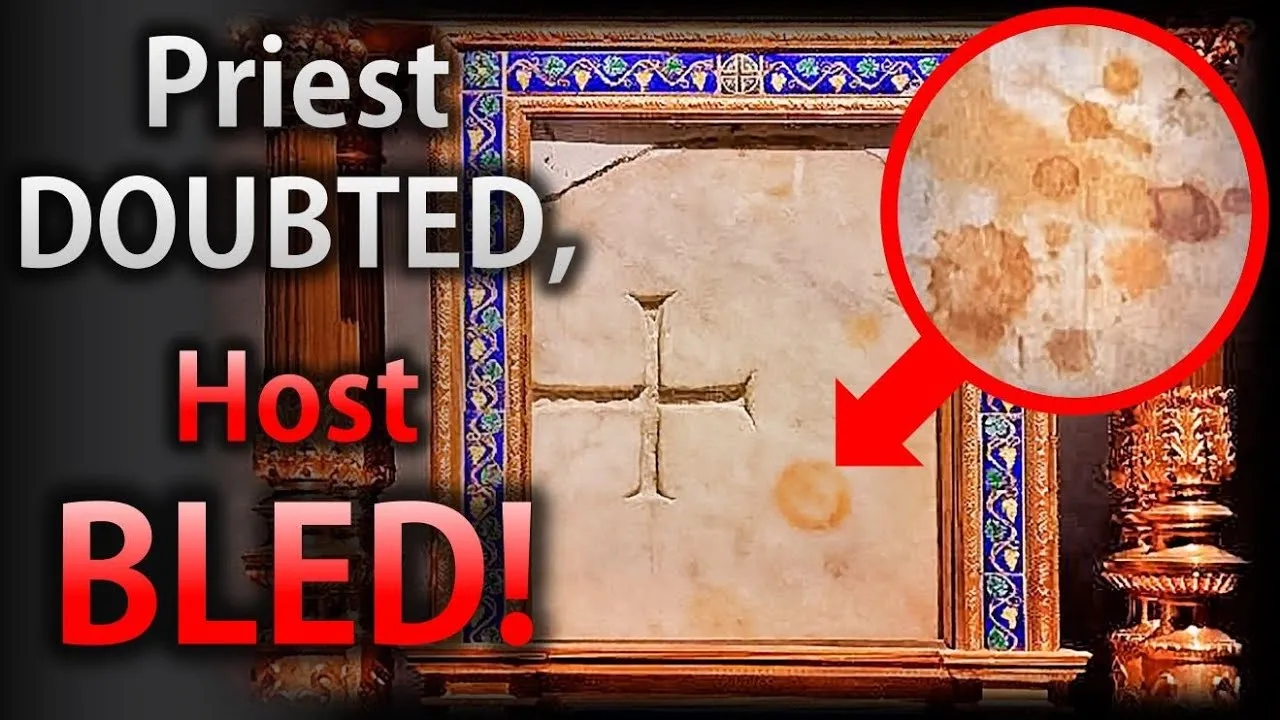
The small Italian town of Bolsena became the setting for one of the most influential Eucharistic miracles in the history of our Catholic faith. What makes this miracle particularly significant? Unlike other miraculous events, this divine manifestation directly shaped Catholic worship practices that continue eight centuries later, establishing a feast celebrated worldwide to this day.
What happened in Bolsena-Orvieto?
In the year 1263, a German priest named Peter of Prague stopped at Bolsena whilst on pilgrimage to Rome. Though described as a pious man, Father Peter struggled with doubts about transubstantiation—the Catholic doctrine that bread and wine truly become Christ’s body and blood during consecration. These theological uncertainties troubled him deeply as he journeyed through Italy. It is important to note that Pope Urban IV was residing in nearby Orvieto at this time, approximately 10 miles from Bolsena.
As Father Peter celebrated Holy Mass at the Church of St. Christina in Bolsena, an extraordinary manifestation occurred. Upon pronouncing the sacred words of consecration, blood began seeping from the consecrated Host, trickling over his hands onto the altar and the corporal (the small cloth upon which the host and chalice rest). Overcome with confusion and alarm, he initially attempted to hide the blood. However, he subsequently interrupted the Mass and requested to be taken to Orvieto to meet with Pope Urban IV.
The Holy Father listened attentively to Father Peter’s account and granted him absolution. Pope Urban immediately dispatched emissaries to conduct a thorough investigation. Once the facts were verified, he ordered the Bishop to bring the Host and blood-stained linen to Orvieto Cathedral. Close examination of the corporal revealed reddish spots that, remarkably, show a profile resembling traditional depictions of Our Lord Jesus Christ.
What was the Church response to the Bolsena-Orvieto Eucharistic Miracle?
The papal procession receiving the sacred relic included archbishops, cardinals, and numerous Church dignitaries who accompanied it to Orvieto Cathedral. This miraculous event is traditionally linked to Pope Urban IV’s decision to commission St. Thomas Aquinas—who happened to be teaching in Orvieto at that time—to compose liturgical texts for a new feast.
In August 1264, approximately one year after the miracle, Pope Urban IV instituted the Feast of Corpus Christi through the papal bull “Transiturus de Hoc Mundo.” This feast celebrating Christ’s Real Presence continues as a major celebration in Orvieto, where the bloodstained corporal remains enshrined in a golden reliquary, visible to pilgrims even today.
Eucharistic Miracle 3:S iena, Italy (1730)
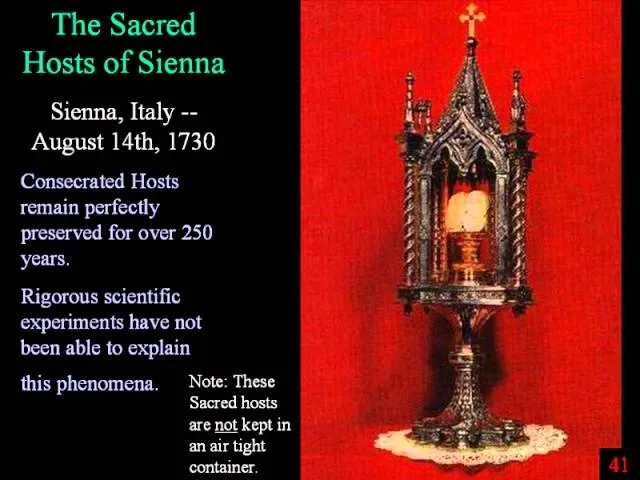
What becomes of the Holy Eucharist when it falls into the hands of thieves? The remarkable miracle of Siena provides us with a profound answer. This extraordinary event stands as one of the most compelling testimonies to the Real Presence of Christ in the Blessed Sacrament.
What happened in Siena Italy?
The sacrilegious act occurred on August 14, 1730, as the citizens of Siena prepared for the Feast of the Assumption. Most of the faithful had gone to attend special services elsewhere, leaving the Church of St. Francis largely unattended. Taking advantage of this situation, thieves broke into the church and targeted the sacred vessels within.
The criminals forced open the tabernacle and stole a golden ciborium containing 351 consecrated Hosts—348 whole Hosts and three halves. Their evil deed remained undiscovered until the following morning when a priest opened the tabernacle during Mass. Shortly thereafter, a parishioner found the ciborium’s lid discarded in the street. The Archbishop ordered public prayers of reparation while authorities began searching for both the Hosts and those who had committed this grave offense.
What happened next reveals God’s providence. Just three days later, on August 17, a priest praying in the Church of St. Mary of Provenzano noticed something white protruding from an offering box. Upon inspection, church officials discovered all 351 Hosts—still covered in dust and debris but completely intact. Following a careful cleaning, the Hosts were carried in solemn procession back to the Church of St. Francis.
The preservation of these Hosts defies natural explanation in three significant ways:
- Despite exposure to dirt and unfavorable conditions, they never deteriorated
- Fifty years after their recovery, an official investigation in 1780 found them still fresh
- To verify this phenomenon, Archbishop Tiberio Borghese conducted an experiment in 1789, placing unconsecrated hosts in a sealed container—these control hosts had reduced to dark yellow fragments within ten years, while the consecrated Hosts remained pristine
Throughout the following centuries, multiple scientific examinations occurred:
- In 1914 (authorized by Pope St. Pius X)
- Again in 1922
- Further tests in 1950
- Additional verification in 1951
Professor Siro Grimaldi, who led the 1914 investigation, concluded the preservation represented “a unique phenomenon that inverts the natural law of conservation of organic material.” This is consistent with Catholic understanding that the Eucharist, while appearing as bread, has truly become the Body of Christ.
Today, these miraculous Hosts remain preserved in the Basilica of St. Francis in Siena, where they are displayed on the 17th of each month commemorating their recovery.
Eucharistic Miracle 4: Blanot, France (1331)
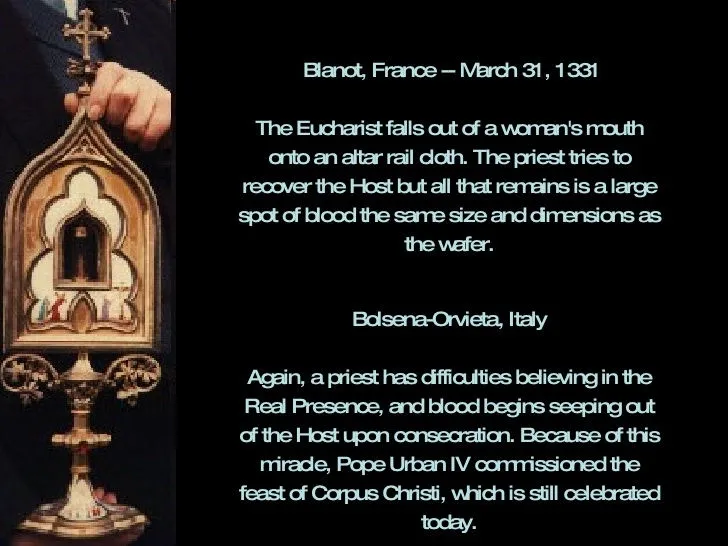
The small French village of Blanot, nestled in a picturesque valley surrounded by mountains, became the site of one of the most thoroughly documented Eucharistic miracles of the Middle Ages. I find this miracle particularly compelling as the blood-stained cloth continues to be venerated almost seven centuries later, offering a powerful testimony to what we as Catholics believe about the Real Presence of Our Lord in the Most Holy Eucharist.
What happened in Blanot?
In the 14th century, Blanot was a humble village in central France, situated within the Diocese of Autun [4]. Though seemingly unremarkable in its location, God would choose this simple place to manifest an extraordinary testimony to His presence in the Blessed Sacrament. The historical documentation of this miracle benefits from remarkably thorough ecclesiastical records resulting from canonical discussions between Bishop Pierre Bertrand and diocesan official Jean Jarossier [1]. These records provide a complete picture of the events that transpired on that sacred Easter morning.
On Easter Sunday, March 31, 1331, during the first Mass of the day celebrated by Hugues de la Baume (the vicar of Blanot), the faithful witnessed an astonishing transformation [1]. Following the custom of that period, communicants knelt at the altar railing with a long linen cloth covering their hands [4]. Among the last to receive Holy Communion was Jacquette, the widow of Regnaut d’Effour [1].
As the priest placed the Sacred Host on her tongue and turned toward the altar, the Host fell onto the cloth covering her hands [1]. Thomas Caillot, who was assisting at Mass, immediately alerted the priest [1]. Upon returning to Jacquette, who remained kneeling in reverence, the priest discovered not the Host but a small spot of blood on the cloth [1].
After the Holy Sacrifice of the Mass, the priest took the cloth to the sacristy and placed the stained area in a basin of water [1]. What happened next defies natural explanation – instead of washing away, the bloodstain grew darker and larger, reaching the size and shape of the original Host [4]. Furthermore, the water in the basin turned bloody [4]. Overcome with awe, the priest exclaimed, “This is the Precious Blood of our Lord Jesus Christ!” [4]
How the Blanot miracle survived revolution?
Following this divine manifestation, an official investigation was initiated by Jean Jarossier fifteen days later [4]. After thorough examination of the facts, Bishop Pierre Bertrand sent documentation to Pope John XXII, who subsequently approved the miracle and granted indulgences to those celebrating Mass at Blanot [4].
The blood-stained cloth, carefully preserved through centuries, survived even the tumultuous period of the French Revolution when revolutionaries ransacked the church on December 27, 1793 [4]. Through God’s providence, a faithful parishioner named Dominique Cortet safeguarded this precious relic during this turbulent period [4].
Today, the bloodstained cloth remains enshrined in a crystal tube with gold and copper rings, displayed for the veneration of the faithful each year [4]. Every year on the feast of Corpus Christi, following ancient custom, the relic is solemnly exposed in the church of Blanot—continuing a tradition of veneration that has remained unbroken since medieval times [1].
This reminds us of the timeless truth of Christ’s words: “This is My Body… This is My Blood.”
Eucharistic Miracle 5: Amsterdam, Holland (1345)
The history of Amsterdam reveals much more than its eventual rise as a global trade center. Before its commercial fame, this Dutch city earned the title “Miracle City” through a profound Eucharistic manifestation that transformed it into a medieval pilgrimage destination.
What happened in Amsterdam?
In 1345, Amsterdam existed merely as a tiny fishing village with four streets and several alleys along the main canal. The humble setting consisted of fishermen’s dwellings, a single church, and a monastery. The location for this extraordinary Eucharistic miracle was an ordinary house on Kalverstraat, where on March 15, 1345, God would manifest His presence in a manner that would forever change the city’s spiritual identity. As Catholics, we recognize how this divine intervention laid the foundation for Amsterdam’s remarkable growth and progress throughout subsequent centuries.
A devoutly Catholic man named Ysbrant Dommer found himself gravely ill and believing death was imminent. After receiving the last rites and Holy Communion from a priest, Dommer began coughing violently and vomited, expelling the consecrated Host. Following the customs of the time, his wife gathered the contents and cast them into the fireplace.
The following morning, while tending to the coals, the woman beheld something astonishing—the Sacred Host was floating above the embers, completely intact and surrounded by heavenly light. Most remarkably, she reached directly into the flames to retrieve the Host yet suffered no burns whatsoever. The Host felt cold to her touch despite being amidst burning coals.
After reverently placing the Eucharist in clean linen and securing it in a chest, she summoned the priest. When he attempted to return the Host to the church, it mysteriously reappeared in the original chest. After a third similar occurrence, church authorities recognized this repeated phenomenon as divine intervention, clearly manifesting God’s will that the miracle be publicly acknowledged.
How the Amsterdam Eucharistic Miracle gained Church approval?
Both civil magistrates and the city council conducted official inquiries that verified the truthfulness of all witnesses. The Bishop of Utrecht, following a thorough investigation, officially declared in a pastoral letter that an authentic miracle had indeed occurred in Amsterdam. Furthermore, he authorized the public veneration of this Eucharistic miracle.
As a result, the fisherman’s house was transformed into a chapel called “Heilige Stede” (Holy Site), and the “Heiligeweg” (Holy Way) became an important pilgrimage route.
Even today, the annual “Stille Omgang” (Silent Walk) procession continues, commemorating this extraordinary manifestation of Christ’s Real Presence. This shows the enduring impact of Eucharistic miracles on both faith and culture across many centuries.
Eucharistic Miracle 6: Santarém, Portugal (1247)
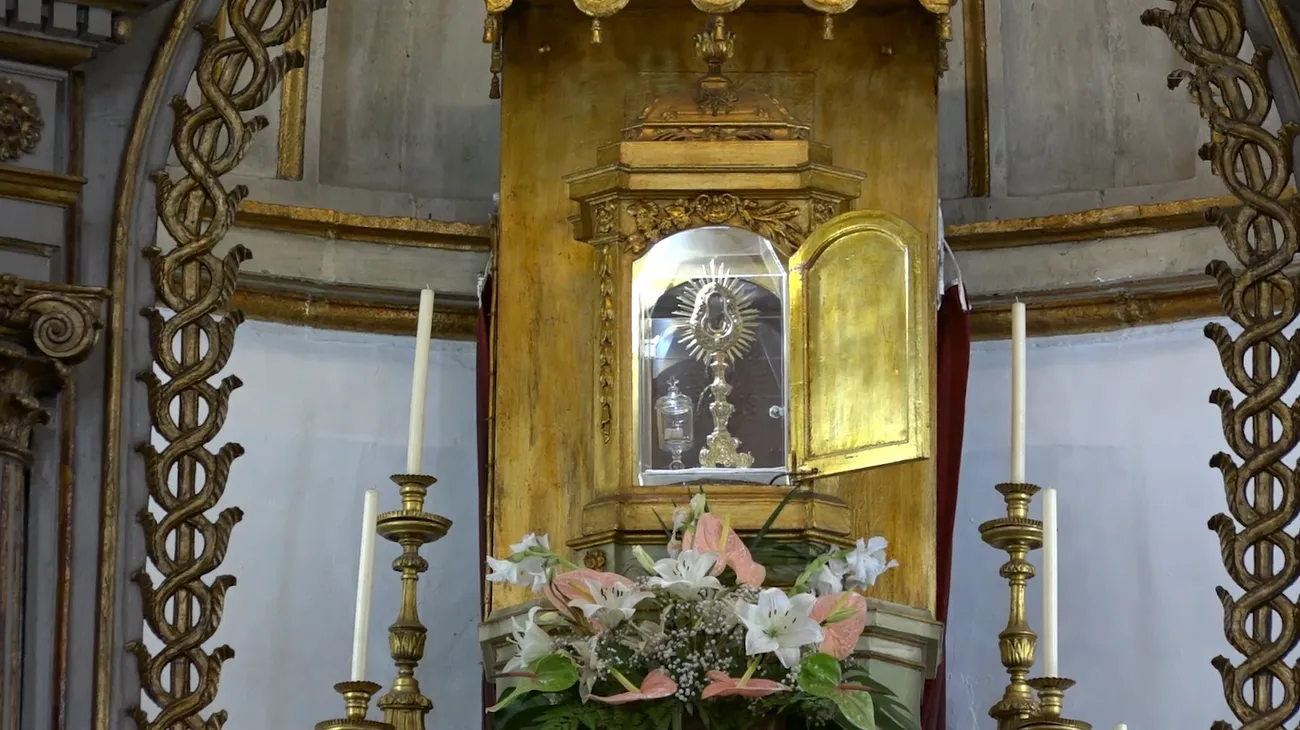
Among the world’s recognized Eucharistic miracles, the extraordinary event at Santarém stands second only to Lanciano in historical significance. This Portuguese miracle has withstood the test of time, offering us remarkable evidence of Christ’s Real Presence for nearly eight centuries.
What happened in Santarém?
The miracle of Santarém was historically documented between 1225-1247, with some records citing February 16, 1247, as the precise date, while others mention 1266. King Alfonso IV commissioned an official document in 1346 that attempted to clarify these chronological variations. Multiple miraculous occurrences involving the same Host might explain these differing dates. Throughout the centuries, this Eucharistic miracle has received recognition from several Popes who granted plenary indulgences: Pius IV, St. Pius V, Pius VI, and Gregory XIV.
The story begins with an unhappy woman whose husband was repeatedly unfaithful. Desperate to restore her marriage, she consulted a local sorceress who promised an effective remedy in exchange for a consecrated Host. After hesitating over this sacrilege, the woman attended Mass at the Church of St. Stephen, received communion, and secretly removed the Host from her mouth, wrapping it in her veil.
Almost immediately, the Host began bleeding profusely, attracting attention from passersby who thought she herself was injured. Frightened, she rushed home and hid the blood-soaked Host in a wooden chest. That night, mysterious rays of brilliant light emanated from the chest, illuminating their bedroom “as if it were daytime.” When confronted by her husband, she confessed everything, and both spent the night kneeling in adoration before the miraculous Host.
The following morning, they informed the parish priest, who carried the bleeding Host in solemn procession back to St. Stephen’s Church. The Host continued bleeding for three consecutive days afterward. Initially preserved in a beeswax reliquary, a second miracle occurred in 1340 when the priest opened the tabernacle to find the wax container broken into pieces and the Host miraculously enclosed in a crystal vessel.
Throughout centuries, this miraculous Host has periodically emitted fresh blood and occasionally displayed visible forms of Jesus Christ. Numerous witnesses, including St. Francis Xavier before his missionary journey to India, have venerated this Eucharistic miracle.
Each year on the second Sunday of April, a solemn procession carries the reliquary from the couple’s former home (now a chapel since 1684) to the Church of the Holy Miracle, continuing an unbroken tradition of veneration.
Eucharistic Miracle 7: Cascia, Italy (14th Century)
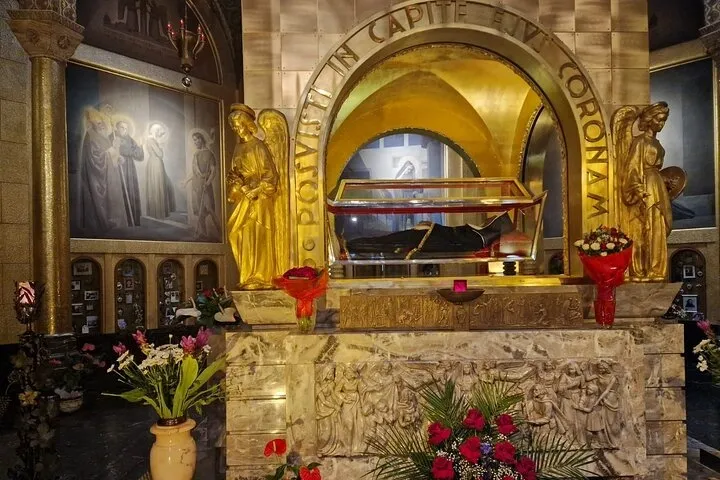
The small Italian town of Cascia, primarily known as the home of Saint Rita, also houses one of the most distinctive Eucharistic miracles in Catholic history. What makes this miracle particularly unique is that the evidence takes the form of blood-stained pages rather than transformed bread as we typically see in other miracles.
What happened in Cascia?
The miracle associated with Cascia actually occurred near Siena in 1330, not in Cascia itself. This shows how Divine Providence works in mysterious ways, connecting different places through sacred events. The Eucharistic miracle took place when a priest was called to bring Holy Communion to a dying peasant in the countryside. The connection to Cascia came afterwards through a respected holy man, Fr. Simone Fidati of Cascia, who was well-known throughout the region for his spiritual wisdom.
The miracle has been documented in numerous historical sources, including the Communal Statutes of Cascia from 1387, which established formal veneration procedures. These ancient documents provide us with a reliable account of what transpired in this extraordinary manifestation of Our Lord’s presence.
Upon receiving the request to visit the sick man, the priest took a consecrated Host but, remarkably, placed it irreverently between the pages of his breviary (prayer book) instead of using a proper pyx for transport. This action, though disrespectful, would become the catalyst for a divine manifestation.
After arriving at the peasant’s home and hearing his confession, the priest opened his breviary to retrieve the Host. To his astonishment, he discovered the Host had transformed into living blood that soaked through both pages where the Blessed Sacrament had been placed. Horrified and remorseful, the priest immediately traveled to Siena’s Augustinian Priory to seek counsel from Fr. Simone Fidati, confessing his irreverence.
In his great wisdom, Fr. Fidati granted the priest absolution but requested to keep the blood-marked pages as evidence of this extraordinary manifestation of Christ’s Real Presence in the Eucharist.
How the Catholic Church has venerated the Eucharistic Miracle in Cascia?
Throughout centuries, these blood-stained pages have received continuous veneration from the faithful. Numerous popes have promoted devotion to this Eucharistic miracle by granting special indulgences, recognizing its significance in strengthening faith in the Real Presence.
The 1687 official recognition document referenced ancient priory records that provided extensive details about the miracle. Moreover, the Communal Statutes specifically mandated that “every year on the Feast of Corpus Christi, the authorities, counsels, and people of Cascia should meet in the Church of St. Augustine” for a solemn procession carrying this venerable relic through the city streets.
In 1930, marking the sixth centenary of the miracle, a special Eucharistic Congress was held in Cascia for the entire Diocese of Norcia, whereupon a beautiful artistic monstrance was consecrated specifically for displaying these blood-stained pages.
I highly recommend visiting the Basilica of St. Rita in Cascia where this remarkable relic currently resides. It continues to draw pilgrims seeking to witness this physical evidence of Christ’s Real Presence in the Most Holy Eucharist. To contemplate these blood-stained pages is to draw upon a tangible connection to our Lord’s sacrifice and His enduring presence among us.
Eucharistic Miracle 8: Avignon, France (1433)
The medieval city of Avignon witnessed one of the most extraordinary Eucharistic miracles in Catholic history—where floodwaters themselves appeared to bow in reverence before the Blessed Sacrament. This remarkable event reminds us of God’s sovereignty over creation and the profound reverence due to the Real Presence of Our Lord.
What happened in Avignon?
At the time of this miracle, Avignon stood as the center of Christendom, with the city’s “Palais des Papes” having served as home to a series of seven popes [5]. The Eucharistic miracle occurred in the Church of the Holy Cross, operated by the Gray Penitents of the Franciscan Order, whose founding traced back to the reign of King Louis VIII [6]. On November 30, 1433, after several days of heavy rainfall, the Sorgue and Rhône rivers rose steadily until they reached dangerous heights, ultimately flooding the city [3]. The small church, which stood directly along the Sorgue River, seemed certain to be destroyed by the raging waters.
What happened in Avignon
The head of the Order, deeply concerned about the Blessed Sacrament that had been exposed for perpetual adoration, courageously rowed a boat with another friar through the flooded streets to reach their church [3]. What they discovered upon arrival was nothing short of miraculous. Despite water standing approximately four feet high around the church, a completely dry pathway extended from the entrance to the altar where the Host remained perfectly unharmed [3]. The waters had remarkably divided to the right and left, reminiscent of the parting of the Red Sea in the Old Testament [5]. Amazed by what they witnessed, the friars summoned others from their Order to verify the miracle, and news spread rapidly throughout the city [3].
As we read in the Scriptures, just as God protected His chosen people then, He now protected His Real Presence in the Blessed Sacrament. Several hundred people ultimately witnessed this phenomenon [3], testifying to God’s power manifested through the Eucharist.
The Gray Penitents established an annual commemoration of the miracle every November 30th, which continues even today at the Chapelle des Pénitents Gris [3]. Before the blessing of the Holy Sacrament during these commemorations, the brothers perform a sacred chant taken from the Canticle of Moses composed after the parting of the Red Sea [3]. This unbroken tradition of nearly 600 years shows the enduring impact of this extraordinary manifestation of Christ’s Real Presence.
Eucharistic Miracle 9: Eten, Peru (1649)
When reflecting on South America’s contributions to Eucharistic miracles, the extraordinary events in Port Eten, Peru stand among the most profound manifestations of Christ’s Real Presence. This 17th-century miracle continues to inspire deep devotion throughout Peru and serves as a beautiful testament to how Our Lord reveals Himself to different cultures.
What happened in Eten?
Port Eten, a modest settlement established by Spanish colonizers in the 16th century, was blessed to become the setting for a remarkable Eucharistic miracle in 1649.
The Almighty chose this particular location – home to the Mochican people whose pre-Inca civilization had flourished along Peru’s northern coast – for a special manifestation of His presence. As we know from Church history, the Spanish colonization period saw dedicated Catholic missionaries working tirelessly to bring the Gospel to indigenous populations. The Franciscan monks who carefully documented this miracle served as primary witnesses to what the Lord revealed during two significant religious celebrations.
The first manifestation occurred on June 2, 1649, during the solemn celebration of Corpus Christi. As the Franciscan monk Jerome de Silva Manrique was concluding the sacred liturgy and preparing to return the monstrance to the tabernacle, he suddenly paused. Within the consecrated Host appeared the radiant face of the Child Jesus, with thick brown curls falling to His shoulders. What makes this vision particularly compelling is that all the faithful present in the church witnessed this same miraculous appearance.
The second manifestation, which I find especially moving for its cultural significance, took place merely weeks later on July 22, during celebrations honoring St. Mary Magdalene, the town’s patroness. According to the testimony of Brother Marco Lopez, superior of the convent in Chiclayo, the Divine Child Jesus appeared again in the Host, this time dressed in a purple tunic with a shirt covering half His chest – clothing that resembled the traditional attire of South American Indians. Simultaneously, many observers noticed three small white hearts united among themselves, symbolizing the Most Holy Trinity present in the consecrated Host. This blessed appearance lasted approximately 15 minutes.
Through adopting the clothing of the local indigenous people, the Divine Child demonstrated His particular love for the Mochican inhabitants. This cultural connection established deep spiritual bonds with the indigenous population who had recently embraced the Catholic faith. The event fostered a tradition of devotion that continues unbroken for over 365 years – a testament to the enduring power of Christ’s Real Presence.
Each year, celebrations begin on July 12 with the solemn transfer of the miraculous Host from its Sanctuary to Eten’s city church, concluding on July 24. Thousands of faithful pilgrims participate annually in these festivities, many reporting special graces received through their devotion to the “Divine Child of Eten.”
Eucharistic Miracle 10 : Wawel, Poland (1300s)
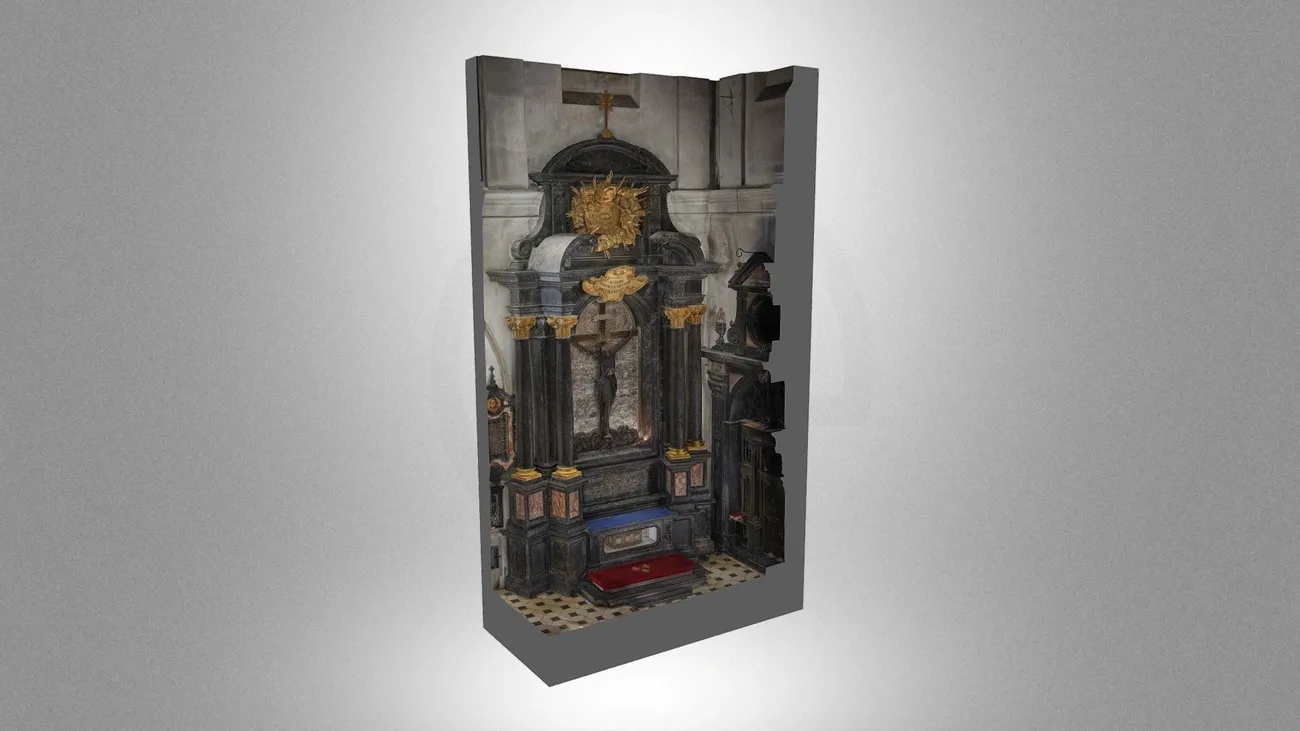
Near the ancient royal castle of Wawel in medieval Poland, Our Lord manifested His presence in a manner quite different from other Eucharistic miracles. The Wawel miracle manifested through mysterious light—a divine illumination that pierced through darkness both literal and spiritual.
What happened in Wawel?
In 14th century Poland, the village of Wawel existed as a small settlement near Krakow, already an important religious center in Eastern Europe [7]. The miracle occurred during the reign of King Casimir III the Great, who would ultimately commemorate the event by commissioning the Church of Corpus Christi [2]. The historical documentation of this miracle comes primarily from church records and royal decrees preserved through centuries, providing reliable accounts of what transpired in this medieval Polish community [7]. As we read in these accounts, the Lord chose to manifest His presence in a most remarkable way.
The miracle began with an act of sacrilege. Thieves broke into the Collegiate Church of All Saints near Krakow, forced open the tabernacle, and stole a ciborium containing consecrated Hosts [8]. Upon discovering the ciborium was not made of genuine gold, the disappointed thieves discarded it along with the Hosts into a muddy marsh filled with garbage outside the village [2].
Shortly after this desecration, villagers witnessed an extraordinary phenomenon—brilliant flashes of mysterious light emanating from the swamp [2]. These bright beams, visible for several kilometers, continued uninterrupted for days [8]. This shows how the Lord does not abandon His people, even when subjected to the most profound disrespect.
Frightened yet fascinated, local residents reported the strange occurrence to the Bishop of Krakow, who, uncertain how such intense light could emerge from a marsh, ordered three days of fasting and prayer [2]. Ultimately, he led the entire village in solemn procession to the illuminated swamp [8]. There, they discovered the ciborium containing completely intact Hosts—the source of the extraordinary light [2]. Once recovered, the hosts never emitted light again [9].
Profoundly moved by this divine manifestation, King Casimir III ordered the construction of the Church of Corpus Christi specifically to commemorate the miracle [9]. Even today, nearly seven centuries later, this Eucharistic miracle remains an essential part of Krakow’s religious identity [7]. Every year on the feast of Corpus Christi, special celebrations take place at the Church of Corpus Christi in Krakow, where paintings and historical documents preserve the memory of this extraordinary event [8]. The annual commemoration includes traditional processions that have continued with few interruptions throughout Poland’s tumultuous history [2].
Eucharistic Miracle 11: Chirattakonam, India (2001)
Unlike the ancient miracles which are shrouded by centuries of documentation, the divine manifestation in Chirattakonam stands as one of the most recently documented Eucharistic miracles with compelling photographic evidence. This miracle provides us with contemporary proof of what the Catholic Church has always taught regarding the Real Presence of Christ in the Eucharist.
What happened in Chirattakonam?
On April 28, 2001, at St. Mary’s parish in Chirattakonam, India, an extraordinary event unfolded during Eucharistic adoration. The church was conducting a Novena to St. Jude Thaddeus, as was their annual custom. Fr. Johnson Karoor, parish pastor, exposed the Blessed Sacrament in the monstrance for public veneration at 8:49 AM. His Beatitude Cyril Mar Baselice, Archbishop of Trivandrum diocese, would ultimately authenticate this remarkable occurrence, stating: “For us believers what we have seen is something that we have always believed… If our Lord is speaking to us by giving us this sign, it certainly needs a response from us.”
The miracle unfolded gradually in a manner most extraordinary. Fr. Karoor first noticed three small red dots appear on the consecrated Host. Upon seeing this unusual manifestation, he interrupted his prayers and invited the faithful present to observe these dots. Wisely preserving the Host, he reposed the monstrance in the tabernacle.
After traveling to Trivandrum and returning on May 5th, Fr. Karoor opened the tabernacle and made an astonishing discovery—the Host now displayed what appeared to be a human face resembling Christ crowned with thorns. Deeply moved and uncertain whether others could see it, he asked an altar server what he observed in the monstrance. The boy immediately replied, “I see the figure of a man.” The congregation likewise fixed their gaze on the transformed Host, confirming that this was not merely a subjective vision but something visible to all present.
Fr. Karoor recognized the importance of documenting this phenomenon and summoned a photographer to capture images of the miraculous Host. Within two hours, the developed photographs revealed the face becoming increasingly distinct with each passing moment. These photographs provide contemporary visual evidence of Christ’s Real Presence, making this Eucharistic miracle uniquely accessible to modern skeptics.
The miraculous Host remains preserved in its monstrance at St. Mary’s Church, continuing to draw faithful pilgrims seeking to witness this contemporary manifestation of divine presence.
Eucharistic Miracle 12: Tixtla, Mexico (2006)
The small town of Tixtla in southwestern Mexico was blessed with one of the most rigorously investigated Eucharistic miracles of our current century. What makes this manifestation particularly compelling is the extensive scientific documentation supporting it, providing powerful evidence of Our Lord’s Real Presence in the Blessed Sacrament.
What happened in Tixtla?
In October 2006, Father Leopoldo Roque, pastor of St. Martin of Tours Parish in Tixtla, invited Father Raymundo Reyna Esteban to lead a spiritual retreat [13]. This retreat coincided with an annual parish gathering that drew approximately 600 faithful participants [14]. The miraculous event unfolded during a concelebrated Mass on October 21, 2006, within the Diocese of Chilpancingo-Chilapa [13].
Upon learning of this extraordinary manifestation, Bishop Alejo Zavala Castro formed a theological commission to investigate the occurrence. The Bishop ultimately invited Dr. Ricardo Castañón Gómez in 2009 to conduct scientific research [13]. This was a prudent choice, as Dr. Castañón had previously examined two bleeding hosts in Buenos Aires between 1999-2006 [13], giving him valuable experience with similar phenomena.
During Holy Communion distribution, Sister Arely Marroquín, serving as an extraordinary minister, suddenly turned pale and approached the celebrant with tears in her eyes [14]. With great reverence and fear, she showed Father Rayito that one of the hosts in her ciborium had begun to effuse a reddish substance [13]. The consecrated host had developed a moist, crumbly texture with several drops of what appeared to be fresh blood [14].
Father Rayito, upon seeing this manifestation, exclaimed, “This seems like a miracle!” and displayed the host to the congregation [14]. The faithful responded with profound emotion – some wept while others applauded at this extraordinary sign of divine presence [14]. This reveals how deeply moving such manifestations of Our Lord can be when experienced within a community of believers.
How Scientists authenticated the Eucharistic Miracle of Tixtla?
Between 2009 and 2012, Dr. Castañón conducted exhaustive scientific examinations with teams from various forensic laboratories [15]. Their findings revealed several inexplicable phenomena that challenge purely natural explanation. First, the reddish substance was confirmed as human blood containing hemoglobin and DNA [16]. Second, forensic experts determined the blood originated from the interior of the host, eliminating the possibility of external tampering [17]. Third, the blood type was identified as AB, matching other Eucharistic miracles including Lanciano and the Shroud of Turin [16].
Most remarkably, microscopic analysis showed intact white blood cells, red blood cells, and active macrophages that engulf lipids—indicating a living metabolism [16]. Furthermore, the tissue corresponds to heart muscle (myocardium) [17]. Perhaps most astonishing was the discovery that while the exterior blood had coagulated since 2006, the interior layers contained fresh blood as of 2010 [15].
On October 12, 2013, Bishop Zavala Castro officially declared the event a “Divine Sign” [13], confirming what the faithful had already recognized through their devotion.
The Tixtla miracle stands as a powerful reminder that the Eucharist is not merely symbolic but truly contains the Body and Blood of Christ.
Eucharistic Miracle 13: Legnica, Poland (2013)
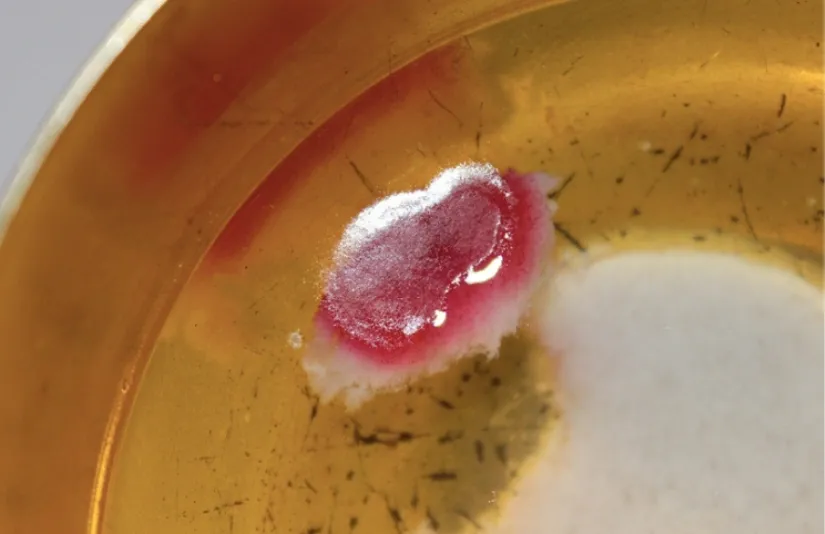
Among recent Catholic Eucharistic miracles, the manifestation in Legnica stands as a profound example of how Our Lord continues to reveal His Real Presence even in our modern times. This Polish industrial city became the setting for an extraordinary transformation that has drawn countless pilgrims seeking to venerate this sacred manifestation.
What happened in Legnica?
On the Holy Day of Christmas 2013, during the celebration of the Sacred Mass at St. Hyacinth’s Shrine in Legnica, a city of approximately 100,000 residents in southwest Poland [18], a most solemn accident occurred. A priest inadvertently dropped a consecrated Host onto the floor [18]. Following proper Church protocols for handling fallen Hosts, the priest placed the Sacred Species in a container with holy water, where it was expected to dissolve completely [18]. This standard procedure became extraordinary in a region known for its spiritual challenges—with weekly Mass attendance at merely 29.9% compared to Poland’s national average of 39.1% [18].
What followed truly demonstrates how God speaks to us through signs when faith begins to weaken. Upon examining the Host after two weeks, the priests discovered it had only partially dissolved, and remarkably, a red substance had appeared on its surface [18]. Bishop Stefan Cichy, then shepherd of the Legnica diocese, wisely formed a special committee to investigate this unusual phenomenon [18].
In February 2014, with great reverence and care, a small fragment of the Host was removed and sent to independent forensic medicine departments at universities in both Wroclaw and Szczecin for scientific analysis [19]. Throughout this process, the Church proceeded with appropriate caution and prudence, as is consistent with her approach to potential miraculous manifestations.
What Scientific findings that lend support to a Eucharistic Miracle in Legnica?
The scientific results revealed something truly extraordinary. Researchers from Szczecin discovered not merely human DNA within the sample but identified the tissue as originating from human heart muscle [18]. Furthermore, the tissue showed alterations typically observed in a heart experiencing profound distress—changes that frequently appear during agony [18].
This revelation calls to mind the words of Scripture regarding Christ’s suffering for our salvation. As Catholics, we believe that each Mass is a re-presentation of Christ’s sacrifice on Calvary, and this miracle offers tangible evidence of this sacred truth.
In April 2016, Bishop Zbigniew Kiernikowski (successor to Bishop Cichy) officially recognized the potential miracle [18]. On July 2, the Host was reverently placed in a reliquary for public veneration, with over 3,000 faithful attending a special liturgy and procession to St. Hyacinth’s Shrine [18]. Notably, the bishop stated that the tissue fragments found “contained the fragmented parts of the cross striated muscle most similar to the heart muscle with changes that often accompany agony” [20].
The Legnica miracle joins other contemporary Eucharistic manifestations that offer profound testimony to what we as Catholics have always believed: Christ truly comes to us, Body and Blood, in the humble appearance of bread and wine.
Eucharistic Miracle 14: Sokolka, Poland (2008)
The small Polish town of Sokolka has become the setting for what I consider one of the most scientifically compelling Eucharistic miracles in recent history. This extraordinary event offers profound evidence of what we as Catholics have always believed – the Real Presence of Our Lord Jesus Christ in the Holy Eucharist.
What happened in Sokolka?
On October 12, 2008, during an ordinary Sunday Mass at St. Anthony’s Church in Sokolka, something remarkable occurred. During the distribution of Holy Communion, a consecrated Host accidentally fell to the floor. Following proper liturgical protocol for such situations, the priest immediately retrieved the sacred Host, placing it in a small vessel with water where it would naturally dissolve. This vessel was entrusted to Sister Julia Dubowska, the parish sacristan, who carefully transferred the contents to another container and placed it in the church sacristy’s safe. It is important to note that only she and the pastor possessed keys to this secure location.
A week later, on October 19, when Sister Julia opened the safe, she immediately noticed something unusual – the distinctive aroma of unleavened bread. As she examined the container, Sister Julia discovered something astonishing: the Host remained partially intact with a curved, bright red stain resembling blood in its center. Remarkably, the water itself remained clear, completely untainted by the coloration. Deeply moved by what she witnessed, Sister Julia promptly informed the pastor, who then summoned other priests to verify this extraordinary phenomenon. Subsequently, they discreetly notified the Metropolitan Archbishop of Bialystok.
The Church, always prudent in such matters, proceeded with careful investigation. On October 29, the container was reverently transferred to the Divine Mercy Chapel in the rectory. The following day, following the Archbishop’s directive, the stained Host was removed from the water, placed respectfully on a corporal, and secured in the tabernacle.
What makes this miracle particularly compelling is the scientific evidence. In January 2009, Professor Maria Sobaniec-Lotowska and Professor Stanislaw Sulkowski from Bialystok Medical University conducted independent analyses. Their findings were nothing short of astonishing – the red substance was identified as heart muscle tissue from a dying person. Most remarkably, the heart muscle fibers appeared interwoven with the bread in a manner that scientists themselves deemed “impossible to achieve with human means.” This mysterious integration of human tissue with bread substance points to the divine nature of this transformation.
As Catholics, we find in the Sokolka miracle a powerful confirmation of our faith. Indeed, the Metropolitan Curia of Bialystok concluded, “The Sokolka event is not opposed to the faith of the Church; rather, it confirms it.” Through this manifestation, Our Lord offers us a tangible sign of His continued presence among us in the Most Holy Eucharist.
Eucharistic Miracle 15: Betania, Venezuela (1991)
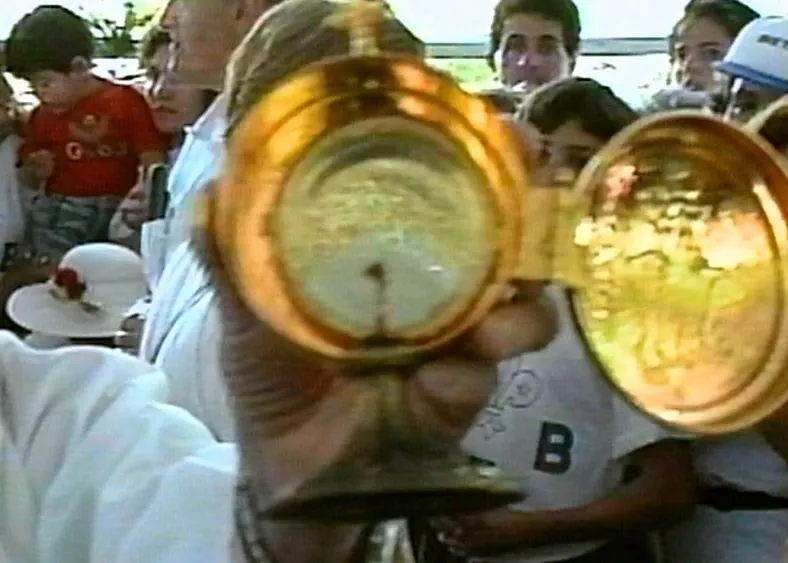
In our modern era, Venezuela became home to one of the most extraordinary Eucharistic miracles. This remarkable manifestation not only presented a bleeding Host but was later captured on video showing it pulsating like a human heart. As Catholics, we have always believed in the Real Presence, but such visible signs strengthen the faith of many who struggle with doubt.
What happened in Betania?
Near the town of Betania, Venezuela, an Augustinian monastery houses what I consider one of the world’s most impressive Eucharistic miracles of recent times. This sacred site gained particular significance on December 8, 1991, the Feast of the Immaculate Conception, during a midnight Mass. The miracle occurred at a Marian shrine where Father Otto Ossa Aristizábal served as chaplain. The timing was providential, coinciding with the conclusion of a vigil celebrating this important Marian feast, with numerous faithful pilgrims gathered in prayer and worship.
During the Holy Mass, Father Otto broke the large consecrated Host into four parts as is customary. Shortly thereafter, upon glancing down at the paten, he witnessed something astonishing—one piece had begun to bleed profusely, “as if it had been gashed open” [23]. With great prudence, he chose not to disturb the congregation and said nothing to the assembled faithful. After Mass concluded, he reverently placed the bleeding Host in the tabernacle for safekeeping.
The following morning at 6:00 AM, when Father Otto checked the Host again, he discovered that “blood was still dripping from it” [23]. For three consecutive days, the blood remained in its liquid state before it began to congeal. Most remarkably, “the blood was not absorbed into the Host, which was quite thick” [23]. Throughout this extraordinary occurrence, numerous witnesses confirmed that Father Otto himself had no wounds from which this blood could have originated.
What Scientific evidence said about the Eucharistic Miracle in Betania?
Upon learning of this phenomenon, Bishop Pio Bella Ricardo immediately ordered scientific testing. Researchers at a hospital in Caracas confirmed through laboratory analysis that the substance was indeed human blood of the AB positive group [24]—notably matching the blood type found on the Shroud of Turin and in other Eucharistic miracles throughout history [23]. Given these compelling findings, the bishop officially approved the authenticity of this miraculous manifestation.
In 1998, a second miraculous event occurred when American pilgrim Daniel Sandford filmed the Host “pulsating like a heart” while it was exposed for adoration [25]. His video recording captured approximately 30 seconds of the Host appearing “as if in flames, with a pulsating Heart bleeding in Its center” [26].
Today, this miraculous Host remains preserved at the Chapel of the Augustinian Recollects Sisters of the Sacred Heart of Jesus in Los Teques, where it continues to draw pilgrims from around the world seeking to deepen their faith in the Real Presence of Our Lord Jesus Christ in the Holy Eucharist.
Comparison Table of Eucharistic Miracles
Looking at these miracles across the centuries, we can see patterns that reveal God’s consistent ways of manifesting His Real Presence. As Catholics, we believe these manifestations are not mere coincidences but divine signs to strengthen our faith in the Holy Eucharist. This table summarizes the key elements of the fifteen Eucharistic miracles we have explored:
| Location | Year | Initial Event/Trigger | Type of Manifestation | Scientific Findings | Current Status |
|---|---|---|---|---|---|
| Lanciano, Italy | 730-750 AD | Priest’s doubt during Mass | Host transformed to flesh, wine to blood | Heart muscle tissue, blood type AB | Preserved in Lanciano |
| Santarém, Portugal | 1247 | Woman’s attempt to use Host for sorcery | Host began bleeding profusely | N/A | Preserved in Church of Holy Miracle |
| Bolsena-Orvieto, Italy | 1263 | Priest’s doubt during Mass | Host bled onto corporal cloth | N/A | Bloodstained corporal preserved in Orvieto Cathedral |
| Amsterdam, Holland | 1345 | Sick man vomited Host into fire | Host floated above flames unharmed | N/A | Annual “Silent Walk” procession continues |
| Blanot, France | 1331 | Host fell during Communion | Blood appeared on communion cloth | N/A | Bloodstained cloth preserved in crystal tube |
| Siena, Italy | 1730 | Theft of consecrated Hosts | Hosts remained uncorrupted | No preservatives found in 1914 testing | Preserved in Basilica of St. Francis |
| Cascia, Italy | 14th Century | Priest placed Host in breviary | Blood soaked through prayer book pages | N/A | Blood-stained pages preserved in Basilica of St. Rita |
| Wawel, Poland | 1300s | Stolen Hosts discarded in marsh | Mysterious light emanating from Hosts | N/A | Commemorated at Church of Corpus Christi |
| Chirattakonam, India | 2001 | During Eucharistic adoration | Face appeared in Host | Photographic evidence available | Preserved at St. Mary’s Church |
| Tixtla, Mexico | 2006 | During Communion distribution | Host effused reddish substance | Human blood type AB, heart muscle tissue | Officially declared “Divine Sign” |
| Sokolka, Poland | 2008 | Host fell during Communion | Red stain appeared in Host | Heart muscle tissue from dying person | Preserved in Divine Mercy Chapel |
| Legnica, Poland | 2013 | Host fell during Mass | Red substance appeared on Host | Heart muscle tissue with agony indicators | Displayed in reliquary at St. Hyacinth’s Shrine |
| Betania, Venezuela | 1991 | During Mass consecration | Host bled and later pulsated | Blood type AB positive | Preserved at Augustinian Chapel |
I find it particularly noteworthy that despite these miracles occurring across different centuries and continents, they show remarkable consistency in their scientific findings when modern testing has been possible. The presence of heart muscle tissue and blood type AB appears repeatedly, strengthening the connection between these divine manifestations and the Sacred Heart of Our Lord. The table above helps us see these patterns clearly, providing a synthesis of information that points to the underlying truth of Christ’s Real Presence in the Eucharist.
Conclusion
In examining these fifteen remarkable Eucharistic miracles spanning thirteen centuries, we witness a consistent pattern of supernatural manifestations that defy scientific explanation. What makes these events particularly compelling is their scientific verification—laboratory findings from Lanciano, Tixtla, Sokolka, and Legnica consistently reveal human heart tissue with blood type AB, often showing signs of distress as if from a person near death. Though many skeptics might dismiss these phenomena, the thorough documentation, preservation of evidence, and rigorous testing make these cases difficult to dismiss.
When consecrated hosts transform into heart tissue or bleed mysteriously, they confirm what we as Catholics have always believed—that Christ becomes truly present—body, blood, soul, and divinity—in the Eucharist. The preservation of Siena’s hosts for nearly three centuries without decomposition stands as a profound testament to divine intervention in our material world.
The Catholic Church teaches that faith doesn’t require physical proof, yet these extraordinary manifestations offer tangible evidence that strengthens belief for the faithful worldwide. As we read in the accounts of these miracles, the Church approaches these phenomena with appropriate caution, conducting thorough investigations before granting recognition. It is beautiful to see how communities where these miracles occurred continue their centuries-old traditions of veneration, whether through annual processions in Amsterdam or special liturgies in Legnica.
The Real Presence transcends human comprehension, yet through these fifteen miracles, God has provided glimpses into this sacred mystery. Their persistence through time reminds us that Christ’s Eucharistic presence remains a living reality—not merely a historical claim or symbolic tradition. This shows the extent that God has gone to strengthen our faith in the Real Presence.
Praise God for His wondrous works that continue to draw souls to Him through these manifestations of His presence in the Blessed Sacrament.
FAQs
Q1. What scientific evidence supports Eucharistic miracles? Several Eucharistic miracles have undergone rigorous scientific analysis. In cases like Lanciano, Tixtla, Sokolka, and Legnica, laboratory tests revealed the presence of human heart tissue and blood type AB in the transformed hosts. These findings, conducted by different researchers across decades, provide compelling evidence for the Catholic belief in transubstantiation.
Q2. How many Eucharistic miracles has the Catholic Church officially recognized? The Catholic Church has officially recognized approximately 150 Eucharistic miracles throughout its history. These events span across different centuries and continents, with the first recorded miracle occurring in Lanciano, Italy around the 8th century.
Q3. What happens during a Eucharistic miracle? In a Eucharistic miracle, the consecrated bread (host) or wine physically transforms, often into what appears to be human flesh or blood. This visible change is considered an extraordinary manifestation of the Catholic doctrine of transubstantiation, where the substance of bread and wine becomes the body and blood of Christ during the Eucharist.
Q4. Are Eucharistic miracles still occurring in modern times? Yes, Eucharistic miracles continue to be reported in contemporary times. Recent examples include events in Chirattakonam, India (2001), Tixtla, Mexico (2006), and Legnica, Poland (2013). These modern occurrences have been subject to scientific investigation and Church scrutiny.
Q5. How does the Catholic Church investigate reported Eucharistic miracles? When a potential Eucharistic miracle is reported, the Church initiates a thorough investigation process. This typically involves gathering eyewitness accounts, conducting scientific analyzes of the transformed substances, and evaluating the event’s spiritual impact. Church authorities carefully review all evidence before making any official declarations about the authenticity of the miracle.
References
[1] – http://www.therealpresence.org/eucharst/mir/blanot.html
[2] – http://yamicatholic.blogspot.com/2014/03/eucharistic-miracle-of-blanot-france.html
[3] – http://www.therealpresence.org/eucharst/mir/english_pdf/Avignon1.pdf
[4] – https://www.deepertruthcatholics.com/single-post/2016/11/09/the-guardian-angel-eucharistic-miracle-of-avignon-france-1433
[5] – https://frjohnnoonebooks.org/blog/eucharistic-miracle-of-avignon-france-1433
[6] – http://www.therealpresence.org/eucharst/mir/english_pdf/Krakow.pdf
[7] – https://stlukenicholasville.org/news/eucharistic-miracle-of-the-week-17
[8] – https://www.deepertruthcatholics.com/single-post/2017/07/14/the-guardian-angel-eucharistic-miracle-of-krakow-poland-1345
[9] – https://frjohnnoonebooks.org/blog/eucharistic-miracle-rakow-poland-1345
[10] – http://www.therealpresence.org/eucharst/mir/english_pdf/Tixtla1.pdf
[11] – https://catholiclife.diolc.org/2024/01/12/scientific-evidence-for-a-eucharistic-miracle/
[12] – https://www.ncregister.com/features/three-eucharistic-miracles-which-cases-have-undergone-the-most-extensive-scientific-analysis
[13] – https://www.stmike.org/from-the-pastors-desk/eucharistic-miracles-tixla-2006
[14] – https://www.deepertruthcatholics.com/single-post/the-guardian-angel-eucharistic-miracle-of-tixtla-mexico-2006
[15] – https://www.ncregister.com/news/polish-eucharistic-miracle-in-legnica
[16] – https://www.stmike.org/from-the-pastors-desk/eucharistic-miracles-legnica-2013
[17] – https://www.magiscenter.com/blog/approved-eucharistic-miracles-21st-century
[18] – https://loamagazine.us/the-eucharistic-miracle-at-finca-betania/
[19] – https://www.tumblarhouse.com/blogs/news/recent-eucharistic-miracles-science?srsltid=AfmBOorHcYpwrAPKmX8RQ1stxGTnhUJMZ9jlPA50xrU7xnOno8upvU6k
[20] – https://www.deepertruthcatholics.com/single-post/the-guardian-angel-eucharistic-miracle-of-venezuala-1991-betania-and-miraculous-holy-communions
[21] – http://www.therealpresence.org/eucharst/mir/english_pdf/Betania.pdf
